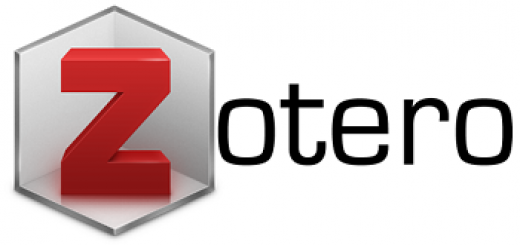Geospatial Intelligence (GEOINT) As A National Defense Strategy for Information Overload in Indonesia
Abstract
The global phenomenon in the Industrial Revolution 4.0 era is currently hitting Indonesia. Many information floods the public every minute with various content spread across multiple media. This information for a country can be a powerful weapon as a form of intelligence product to prepare a national defense strategy. The demands of an increasingly fast-paced era make GEOINT needed to obtain information quickly, accurately and integrate synthesis and analysis. Therefore, this study was conducted to identify the development of GEOINT in Indonesia and its application in overcoming information overload in the present. This study uses the library method by collecting references relevant to the research problem from various sources. The study results indicate that the overload of information from multiple increasingly sophisticated media due to technological developments has made GEOINT's information sources richer. GEOINT in Indonesia continues to optimize accuracy and speed in geospatial analysis to avoid losing to the rate of data sources that continue to increase, both from human resources, hardware, software, and access to information available according to Indonesia's needs. GEOINT as a national defense strategy can be carried out as a form of effective information collection and can protect confidential information. GEOINT will become increasingly valuable in both military and non-military management over the next few years.
References
10 US CODE: ARMED FORCES, Chapter 22: National Geopatial-Intelligence Agency, Section 467: Definitions. (n.d.).
Bacastow, T. S., & Bellafiore, D. (2009). Redefining Geospatial Intelligence. American Intelligence Journal, 27(1), 38–40.
Clapper, Jr. . , Lt. Gen. J. R. (2004). Imagine The Power of GEOINT. Pathfinder, 2(1).
Clarke, K. C. (2009). Geospatial Intelligence. International Encyclopedia of Human Geography, 466–467. https://doi.org/10.1016/B978-008044910-4.00031-6
Clarke, K. C. (2020). Geospatial Intelligence. In International Encyclopedia of Human Geography (pp. 127–130). Elsevier. https://doi.org/10.1016/b978-0-08-102295-5.10550-5
Coorey, R. S. (2018). The Evolution of Geospatial Intelligence. Advances in Military Geosciences, 143–151. https://doi.org/10.1007/978-3-319-73408-8_10
Datareportal. (2021). Digital in Indonesia: All the Statistics You Need in 2021 — DataReportal – Global Digital Insights. https://datareportal.com/reports/digital-2021-indonesia
Domo. (2018). Data Never Sleeps 6 | Domo. https://www.domo.com/learn/infographic/data-never-sleeps-6#/
Dunnigan, J. F. (2003). How to Make War (4th ed.). Harper Perennial.
Hamzah, Z. (2013, June 27). Indonesia Bentuk Intelijen Geospasial | Republika Online. Republika. https://republika.co.id/berita/koran/news-update/13/06/26/mp0euk-indonesia-bentuk-intelijen-geospasial
Lee, M. G. (2013). Geospatial Intelligence (GEOINT) and Intelligence Surveillance and Reconnaissance (ISR) convergence. Motion Imagery Technologies, Best Practices, and Workflows for Intelligence, Surveillance, and Reconnaissance (ISR), and Situational Awareness, 8740, 874003. https://doi.org/10.1117/12.2019032
Luthfi, R. (2012). Implementasi Revolution in Military Affairs (RMA) dalam Kebijakan Pertahanan Indonesia.
Mallick, P. (2000). Revolutions in Military Affairs RMA an Apprisal. Trishul. https://www.researchgate.net/publication/344737633
National Research Council (U.S.). Mapping Science Committee. (2006). Priorities for GEOINT research at the National Geospatial-Intelligence Agency. National Academies Press.
NGA (National Geospatial-Intelligence Agency). (2004). GEOINT Basic Doctrine: NGA GEOINT Publication 1.
NGA (National Geospatial-Intelligence Agency). (2005). Memorandum for Principal Director of National Defense.
Prihartini, I. (2021). ESRI INDONESIA DAN DITTOPAD BERSINERGI DALAM MENGHADAPI ERA DISRUPSI DIGITAL DALAM PERTAHANAN NASIONAL Implementasi Geographic Information System dan Kecerdasan Artifisal Untuk Mewujudkan Dittopad 4.0.
Public. (2008). International Criminal Court: Office of the Prosecutor. from https://www.icc-cpi.int/CourtRecords/CR2012_05665.PDF
Rajab, D., & Supriyatno, M. (2019). Konsep Intelijen Geospasial (GEOINT) untuk Mendukung Sistem Pertahanan Semesta (SISHANTA). Makmur Cahaya Ilmu.
Santos, Jr., E., Santos, E. E., Nguyen, H., Pan, L., & Korah, J. (2005). Large-scale distributed foraging, gathering, and matching for information retrieval: assisting the geospatial intelligence analyst. Intelligent Computing: Theory and Applications III, 5803, 66. https://doi.org/10.1117/12.606395
Schultz, M. (2004). Letter to Our Readers. Pathfinder, 2(1). https://doi.org/10.1117/12.606395
Schwartz, B. (2004). Paradox of Choice.
Tandaric, N. (2015). Geospatial Intelligence: A Review of the Discipline in the Global and Croatian Contexts. Kartografija i GeKartografija (Cartography and Geoinformation), 14(23), 38–49.
Teguh. (2021). Industri Pertahanan RI Bisa Masuk Top 50 Dunia. Website Resmi Pemerintah Daerah Provinsi Jawa Barat. https://jabarprov.go.id/index.php/news/41551/Industri_Pertahanan_RI_Bisa_
Copyright (c) 2022 Muhammad Aldin Yusfan, Sri Kartika Sakti

This work is licensed under a Creative Commons Attribution-NonCommercial-NoDerivatives 4.0 International License.
Copyright Notice
The Authors submitting a manuscript do so on the understanding that if accepted for publication, copyright of the article shall be assigned to journal IJETS, University Of Technology Yogyakarta as publisher of the journal, and the author also holds the copyright without restriction.
Copyright encompasses exclusive rights to reproduce and deliver the article in all form and media, including reprints, photographs, microfilms and any other similar reproductions, as well as translations. The reproduction of any part of this journal, its storage in databases and its transmission by any form or media, such as electronic, electrostatic and mechanical copies, photocopies, recordings, magnetic media, etc. , are allowed with a written permission from journal IJETS, University Of Technology Yogyakarta.
Jurnal IJETS Board, University Of Technology Yogyakarta, the Editors and the Advisory International Editorial Board make every effort to ensure that no wrong or misleading data, opinions or statements be published in the journal. In any way, the contents of the articles and advertisements published in the journal IJETS, University Of Technology Yogyakarta are sole and exclusive responsibility of their respective authors and advertisers.













 This work is licensed under a Creative Commons Attribution-ShareAlike 4.0
This work is licensed under a Creative Commons Attribution-ShareAlike 4.0